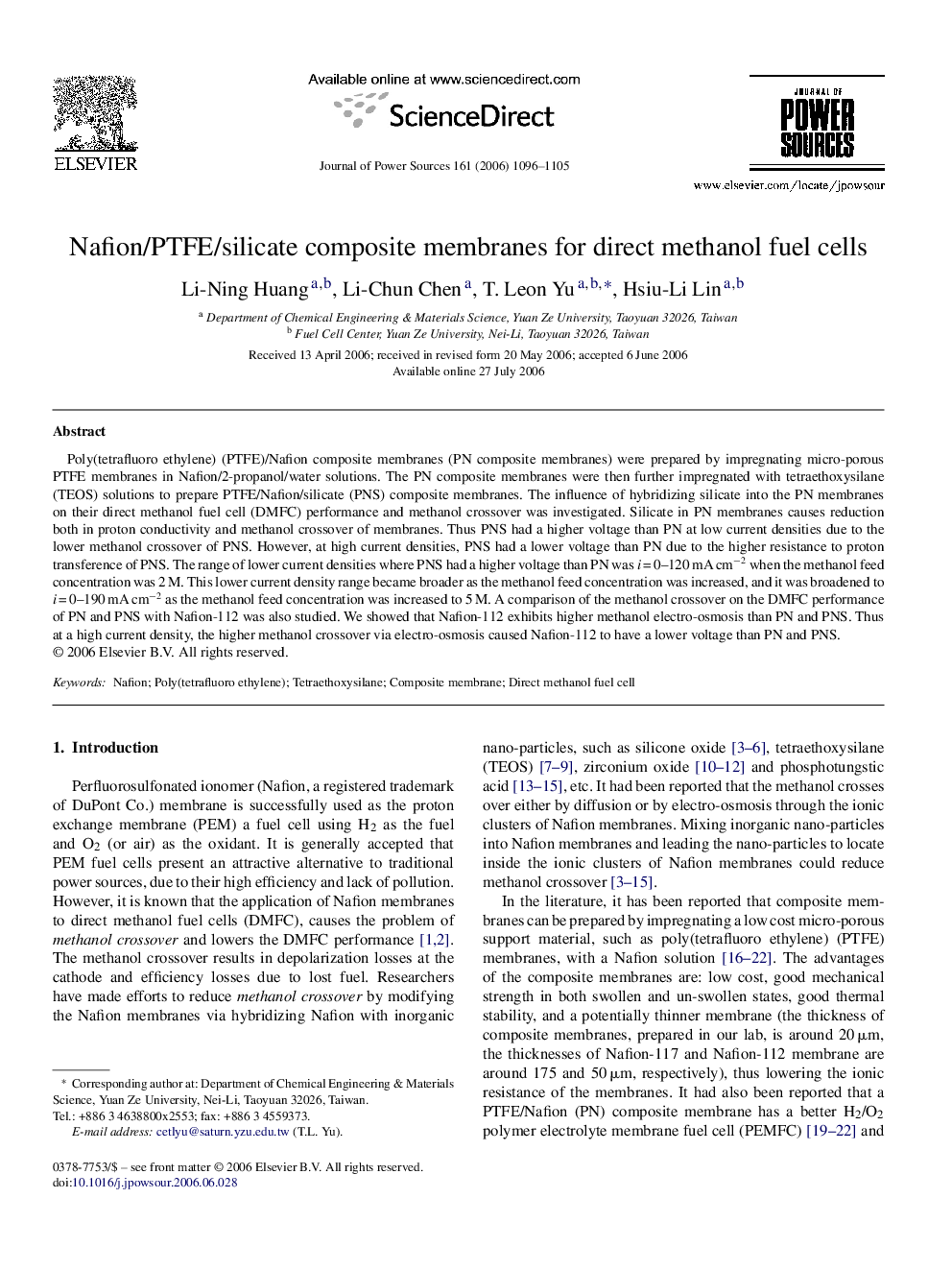| Article ID | Journal | Published Year | Pages | File Type |
|---|---|---|---|---|
| 1292058 | Journal of Power Sources | 2006 | 10 Pages |
Poly(tetrafluoro ethylene) (PTFE)/Nafion composite membranes (PN composite membranes) were prepared by impregnating micro-porous PTFE membranes in Nafion/2-propanol/water solutions. The PN composite membranes were then further impregnated with tetraethoxysilane (TEOS) solutions to prepare PTFE/Nafion/silicate (PNS) composite membranes. The influence of hybridizing silicate into the PN membranes on their direct methanol fuel cell (DMFC) performance and methanol crossover was investigated. Silicate in PN membranes causes reduction both in proton conductivity and methanol crossover of membranes. Thus PNS had a higher voltage than PN at low current densities due to the lower methanol crossover of PNS. However, at high current densities, PNS had a lower voltage than PN due to the higher resistance to proton transference of PNS. The range of lower current densities where PNS had a higher voltage than PN was i = 0–120 mA cm−2 when the methanol feed concentration was 2 M. This lower current density range became broader as the methanol feed concentration was increased, and it was broadened to i = 0–190 mA cm−2 as the methanol feed concentration was increased to 5 M. A comparison of the methanol crossover on the DMFC performance of PN and PNS with Nafion-112 was also studied. We showed that Nafion-112 exhibits higher methanol electro-osmosis than PN and PNS. Thus at a high current density, the higher methanol crossover via electro-osmosis caused Nafion-112 to have a lower voltage than PN and PNS.
